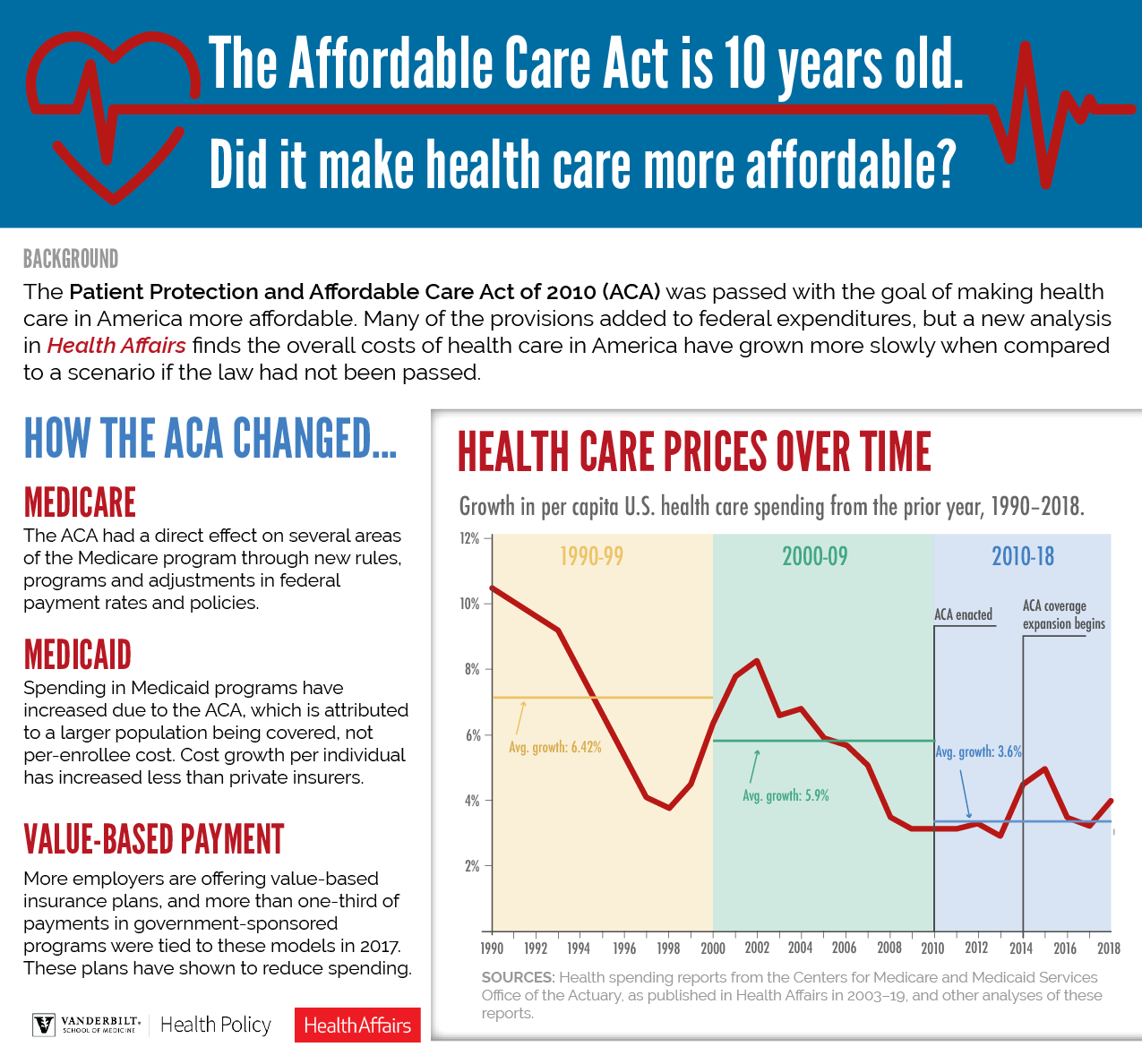
A decade after the passage of the Patient Protection and Affordable Care Act of 2010, there is evidence that the landmark health legislation has contributed to slower growth U.S. health care spending.
An analysis published in the March issue of the journal Health Affairs coincides with the 10-year anniversary of the law’s passage and illustrates how the law has impacted health care spending, which currently consumes nearly one-fifth the entire gross domestic product in the U.S.
“It’s clear that a number of the provisions in the ACA have dampened cost growth,” said lead author Melinda Buntin, PhD, Mike Curb professor of health policy and chair of the Department of Health Policy at Vanderbilt University School of Medicine. “What remains to be seen is whether there is the will to continue these measures.”
The analysis examines key policy reforms included in the ACA, including Medicaid insurance coverage expansion, Medicare payment reforms and reforms of private insurance markets. There have been broad studies and estimates about the law’s effect on health care expenditures nationally but few definitive sources related to health spending since 2010.
The study, co-authored with Associate Professor of health policy John Graves, PhD, highlights areas where savings have been found including lower Medicare payment rates and slower growth in areas where the insurance exchanges are more competitive.
"While the ACA has made a dent, what also stands out to us is that further actions will be required in all sectors and at multiple levels of government to maintain the relatively slow rates of growth we have seen since passage of the ACA," Graves said.
The greatest savings, however, may be due to value-based payment initiatives, which aim to create incentives for physicians and hospitals to deliver high-quality care while keeping costs in check.
“In our opinion, the increased attention paid to value-based payment by non-Medicare payers—namely states and private insurers—is likely a key contributor to the slower rate of per capita cost growth that we’ve seen over the past decade,” the study said.
“Disentangling the exact effects of a major piece of legislation from underlying trends is nearly impossible, but it is also nearly impossible to deny that the ACA has had far-reaching cost effects on the entire health care industry,” Buntin and Graves wrote. “The most politically salient examples of high health care costs — including those due to the introduction of new drugs and out-of-network billing — are virtually unrelated to the ACA, while cost growth for health services in Medicare, Medicaid, and even Marketplace plans seems to be settling into a ‘new normal’ slower rate.”
